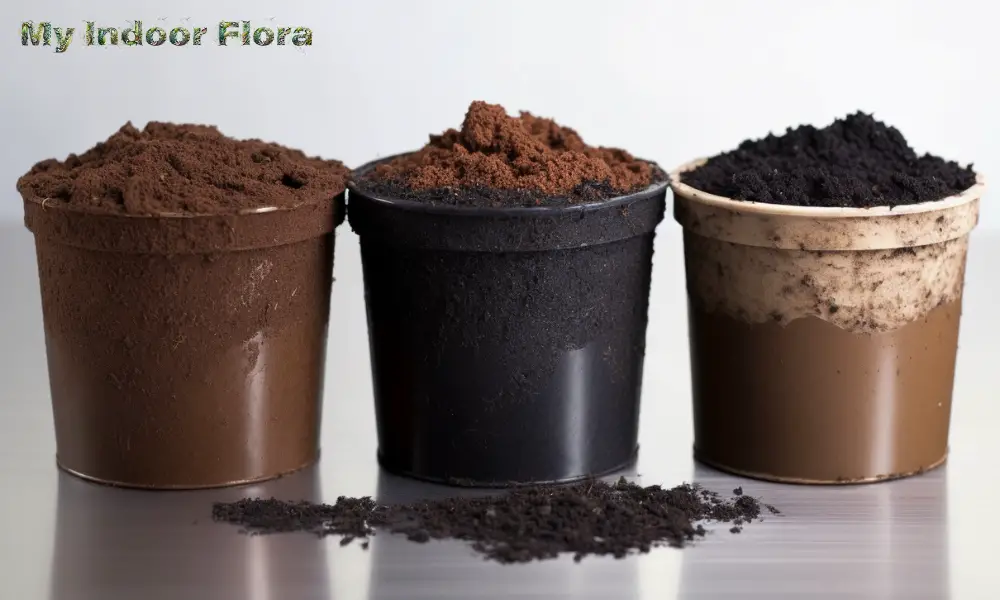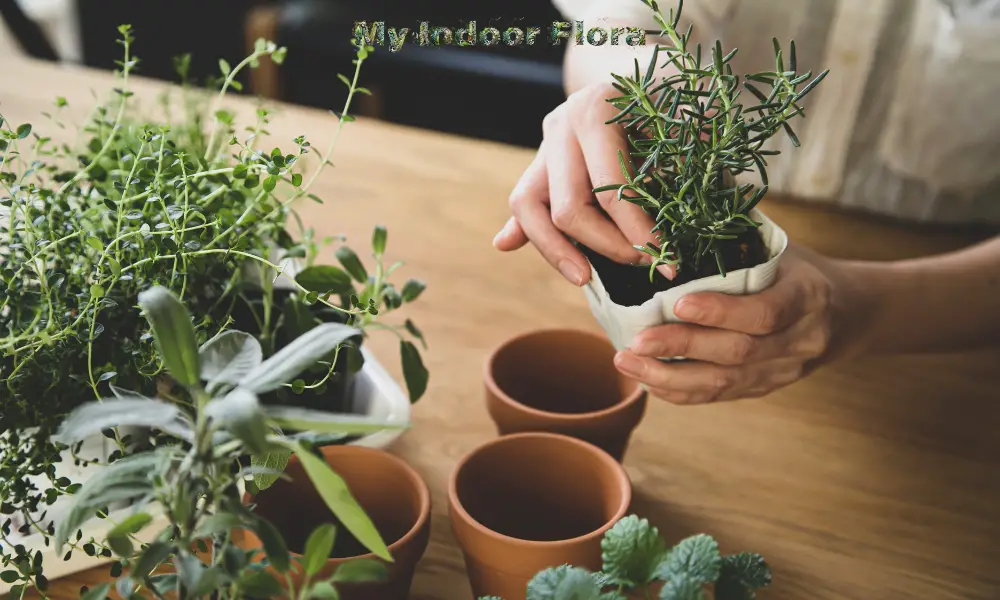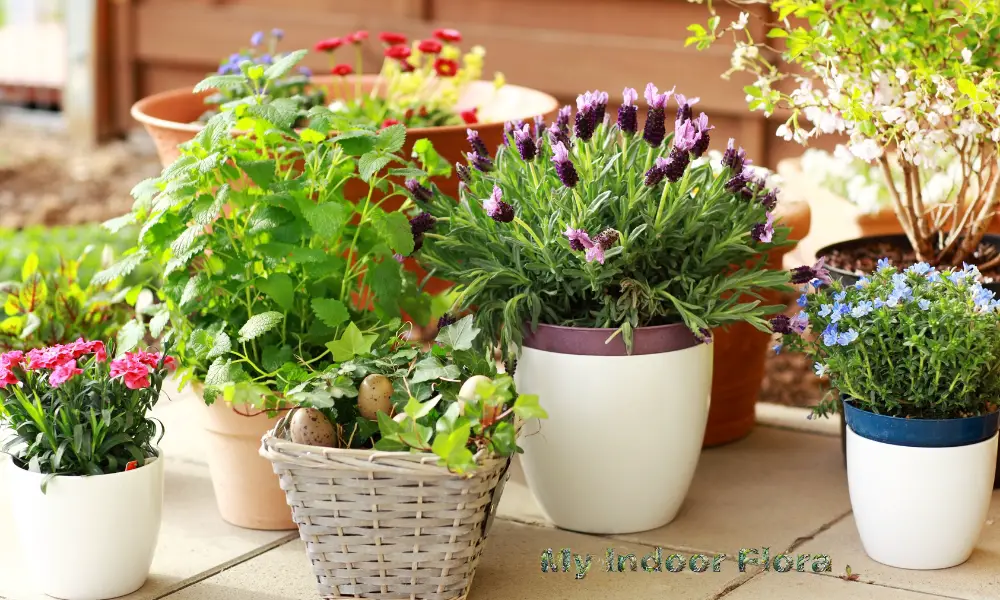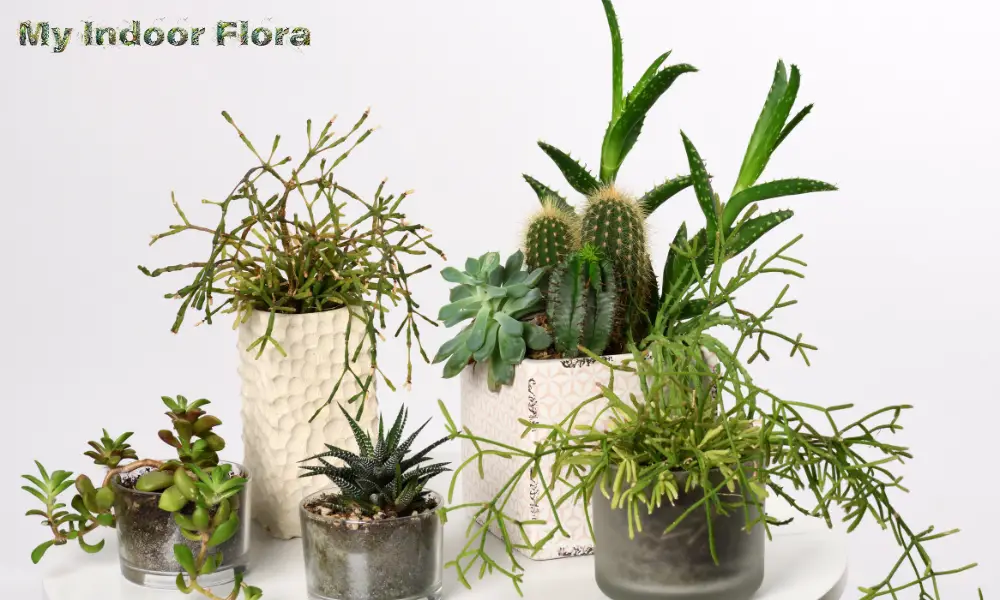Potting mixes are essential components of a thriving indoor or outdoor garden, providing plants with the necessary nutrients, aeration, and drainage for optimum growth. These mixes can be categorized into three main types: pre-mixed, custom, and soilless mixes. Each type has its unique composition and applications, catering to the diverse needs of various plant species.
In the United States alone, the potting soil market is projected to grow to $1.94 billion in 2027 at a CAGR of 3.2%, according to Grand View Research, showcasing the growing demand for high-quality potting mixes.
In this comprehensive guide, we’ll delve into the characteristics, benefits, and drawbacks of each type of potting mix, as well as how to choose the right mix for your plants. Armed with this knowledge, you can create the perfect environment for your plants to flourish and thrive.

What are Pre-Mixed Potting Mixes?
Pre-mixed potting mixes are commercial products that come ready to use out of the bag. They typically consist of a blend of various components, such as peat moss, coir, compost, and perlite or vermiculite. Some of the most popular brands include Miracle-Gro, Pro-Mix, and FoxFarm.
The Pros and Cons of Pre-Mixed Potting Mixes
Using pre-mixed potting mixes offers several benefits. They are listed below.
- Convenience and ease of use: With a pre-mixed potting mix, there’s no need to source individual components or spend time measuring and blending them. Just open the bag and start potting your plants.
- Consistent quality and nutrient content: Pre-mixed potting mixes are formulated by professionals who ensure that the mix contains the right balance of nutrients and other elements for optimal plant growth.
However, pre-mixed potting mixes also have some drawbacks.
- Limited customization: These mixes may not be suitable for plants with specific needs or preferences, as they are formulated to cater to a wide range of plants.
- Cost: Pre-mixed potting mixes can be more expensive than creating a custom mix, especially if you’re using large quantities.
How to Create Custom Potting Mixes?
Creating a custom potting mix allows you to tailor the composition to suit the specific needs of your plants. Lets find out the essential components of a custom mix and how to create one yourself.

Components of a Custom Potting Mix
A custom potting mix typically consists of three main components.
- Base materials: These provide the bulk of the mix and include peat, coir, compost, or bark. Each base material has its unique properties and characteristics, so choose the one that best suits your plants’ needs.
- Drainage and aeration materials: Perlite, vermiculite, or pumice help improve drainage and aeration in the mix, ensuring that your plants’ roots receive adequate oxygen.
- Nutrient sources: Compost, worm castings, or slow-release fertilizers provide essential nutrients for plant growth and development.
Determining the Right Proportions
The ideal proportions of each component in your custom potting mix will depend on your plants’ specific needs. As a starting point, consider the following general guidelines.
- 40-60% base material
- 20-30% drainage and aeration material
- 10-20% nutrient source
You may need to adjust these ratios based on your plants’ preferences, local climate, and other factors. For example, plants that prefer well-draining soil may benefit from a higher percentage of perlite or pumice in the mix.
Step-by-Step Guide to Creating a Custom Potting Mix
- Gather your chosen components and any necessary tools, such as a large bucket or wheelbarrow, a trowel, and gloves.
- Measure out the appropriate quantities of each component based on your desired ratios.
- Mix the components thoroughly, ensuring that the materials are evenly distributed throughout the blend.
- Test the mix for drainage and aeration by squeezing a handful of it and observing how quickly water drains through. Adjust the ratios if necessary.
- Store your custom potting mix in a clean, dry container with a lid to prevent contamination and moisture loss.
Benefits and Challenges of Custom Potting Mixes
Custom potting mixes offer several advantages listed below.
- Tailored to specific plant requirements: Creating a custom mix allows you to adjust the composition to suit the unique needs of your plants, ensuring optimal growth and health.
- Control over quality and sustainability: You can source high-quality, sustainable ingredients and avoid any components that may be harmful to your plants or the environment.
However, there are also some challenges.
- Time-consuming and potentially messy: Mixing your potting mix can take time and may create a mess, especially if you’re working with large quantities.
- Requires experimentation: Finding the perfect blend for your plants may involve trial and error, requiring adjustments and close monitoring of your plants’ health.
What are Soilless Potting Mixes and When to Use Them?
Soilless potting mixes, as the name suggests, do not contain any soil. Instead, they are composed entirely of non-soil components, such as peat moss, coir, bark, and perlite or vermiculite. These mixes are often used in hydroponic systems, seed starting, or for growing plants with specific requirements.

Types of Soilless Potting Mixes and Their Applications
There are several types of soilless potting mixes, each with its distinct properties and applications.
- Peat-based mixes: These mixes primarily consist of peat moss and are suitable for a wide range of plants. However, peat moss is a non-renewable resource, and its harvesting has raised environmental concerns.
- Coir-based mixes: Made from coconut coir, these mixes are an eco-friendly alternative to peat-based mixes. They have excellent water-holding capacity and are suitable for a variety of plants, including water-loving species.
- Bark-based mixes: These mixes are made from finely ground pine bark and are ideal for plants that prefer well-draining, acidic growing conditions, such as orchids and azaleas.
Advantages and Disadvantages of Soilless Potting Mixes
Soilless potting mixes offer several benefits.
- Lightweight and well-draining: These mixes are typically lighter and more porous than soil-based mixes, promoting better root growth and preventing waterlogging.
- Sterile and free from pests and diseases: Soilless mixes are less likely to harbor pests, diseases, and weed seeds, reducing the risk of problems in your plants.
However, there are also some drawbacks.
- Requires additional nutrient sources: Soilless mixes do not contain the natural nutrients found in soil, so you’ll need to provide your plants with fertilizer or other nutrient sources.
- Environmental concerns: Some soilless mixes, particularly peat-based ones, have been associated with environmental issues related to their production and harvesting.
Premixed Vs. Custom Vs. Soilless Potting Mixes: Quick Overview
| Attributes | Pre-Mixed | Custom | Soilless |
|---|---|---|---|
| Primary Components | Soil, peat moss, perlite, vermiculite, etc. | Tailored to specific plant requirements | Peat moss, coir, bark, perlite, etc. |
| Best Suited For | General plant needs, both indoor and outdoor plants | Plants with unique growing conditions | Hydroponics, seed starting, specialized plants |
| Key Advantages | Convenience, balanced nutrients, ready to use | Control over ingredients, meets specific needs | Lightweight, well-draining, sterile |
| Potential Drawbacks | May not suit specific plant requirements | Time-consuming, trial and error | Requires additional nutrient sources, environmental concerns (for peat-based mixes) |
How to Choose the Right Potting Mix for Your Plants?
Selecting the right potting mix involves evaluating your plants’ needs, your own preferences, and limitations, and matching the mix type to your specific situation.

Assessing Your Plants’ Needs and Preferences
Consider the following factors when determining what type of potting mix is best for your plants.
- Water and nutrient requirements: Some plants need a mix that retains moisture, while others prefer a well-draining mix. Similarly, certain plants have specific nutrient needs that may not be met by a pre-mixed potting mix.
- Drainage and aeration preferences: Plants with sensitive roots, such as succulents and cacti, require a mix that promotes excellent drainage and aeration to prevent root rot.
- Sensitivity to pH and salt levels: Some plants, like blueberries and azaleas, prefer acidic soil, while others thrive in neutral or alkaline conditions. Additionally, certain plants are sensitive to high salt levels and may require a mix with lower salt content.
Evaluating Your Own Preferences and Limitations
Your personal preferences and constraints should also play a role in your decision-making process.
- Time and effort availability: If you’re short on time or not inclined to spend the effort on mixing your potting mix, a pre-mixed option may be more suitable.
- Budget considerations: Pre-mixed potting mixes can be more expensive than custom mixes, particularly if you need large quantities. Assess your budget to determine which option is more feasible.
- Environmental and sustainability concerns: If you prioritize sustainability and eco-friendliness, opt for a potting mix that uses renewable resources and avoids harmful components.
Matching the Potting Mix Type to Your Specific Situation
Once you’ve assessed your plants’ needs and your preferences, you can choose the most suitable potting mix.
- Pre-mixed mixes: Choose these for convenience and simplicity, especially if your plants have general requirements.
- Custom mixes: Opt for custom mixes if you need tailored solutions and control over the ingredients.
- Soilless mixes: Select soilless mixes for specialized applications, such as hydroponics, seed starting, or plants with unique growing conditions.
Tips for Using and Maintaining Potting Mixes
To ensure the best results, follow these tips when using and maintaining your potting mix.

1. Properly Preparing the Potting Mix Before Use
Before potting your plants, moisten the mix to ensure it can hold water effectively. This is particularly important for peat-based mixes, as dry peat can repel water. Add water gradually and mix until the potting mix has a damp, but not soggy, consistency.
2. Monitoring and Adjusting Moisture Levels
Check the moisture level of your potting mix regularly and water your plants as needed. Overwatering can lead to root rot and other issues, while underwatering can cause wilting and poor growth. Adjust your watering schedule based on the specific needs of your plants and the potting mix you’re using.
3. Periodic Replenishment of Nutrients
Over time, the nutrients in the potting mix may be depleted, so it’s essential to replenish them periodically. Add slow-release fertilizers or organic amendments, like compost or worm castings, to ensure your plants receive the necessary nutrients for healthy growth.
4. Recognizing and Addressing Common Potting Mix Issues
Monitor your plants for signs of nutrient deficiencies, root rot, or other problems related to the potting mix. If you notice issues, diagnose the cause and take appropriate action, such as adjusting the mix’s composition, improving drainage, or adding nutrients.
Conclusion
Choosing the right potting mix is crucial for the health and success of your plants. By understanding the differences between pre-mixed, custom, and soilless mixes, you can select the best option for your specific needs. Don’t be afraid to experiment and adjust your potting mix to find the perfect blend for your plants. With the right mix, your plants will flourish and reward you with beautiful foliage, flowers, or fruits.
